Requirements of an Automated Sample Delivery System in Today's Realm of Ever Increasing Sensitivity Demands Utilizing the Atomx Concentrator/Multimatrix Autosampler
In this study, data was collected to evaluate carryover of target analytes in subsequent blanks following high concentration samples.
Anne Jurek, Teledyne Tekmar
Teledyne Tekmar has consistently been at the cutting edge of P&T technology. In keeping with this tradition, Teledyne Tekmar has developed a new combination P&T concentrator (PTC)/Autosampler, the Atomx. The Atomx was developed to fully automate water, soil, and methanol extraction in accordance with the USEPA methods for volatile analyses. The Atomx offers our proprietary #9 U-shaped adsorbent trap, as seen with our Stratum PTC. The Autosampler utilizes an 80 position carousel drive platform for proven reliability. The Atomx offers a reduced sample pathway, Siltek™ coated stainless tubing, and PEEK® tubing to aid in the reduction of carryover. What makes the Atomx unique is the option to not only rinse the entire sample pathway with hot water, but also the capability to rinse the sample pathway in methanol (patent pending).
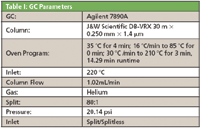
Table I: GC Parameters
In this study, data was collected to evaluate carryover of target analytes in water and soil matrices utilizing the Atomx. The effectiveness of the different rinse options available were evaluated for each matrix. The Atomx proved to be an excellent system in minimizing carryover of target analytes.

Table II: MSD Parameters
Experimental-Instrument Conditions
The Atomx, an Agilent 7890A GC and a 5975C inert XL MSD were used for this analysis. The Atomx was equipped with a #9 adsorbent trap. Tables I and II display the GC, MSD conditions while Tables III and IV display the PTC/Autosampler conditions for water and soil matrices respectively.

Table III: Atomx Water Parameters (Parameters highlighted in yellow were not used).
Calibration
A 50 ppm working calibration standard was prepared in methanol. Calibration standards were prepared in 50 milliliter (mL) volumetric flasks filled to volume with de-ionized water. The water calibration range was 0.5–200 ppb while the soil range was 1.0–200 ppb. The water standards were transferred to headspace free 40 mL vials for analysis while the soil standards were transferred to 40 mL vials in 5 mL aliquots. A 25 ppm Internal Standard (IS) was prepared in methanol and transferred to the standard vessel on the Atomx. The Atomx, using the standards addition feature, then transferred the IS in 5 μl aliquots to the samples in order to hold the IS concentration at a constant 25 ppb.
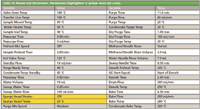
Table IV: Atomx Soil Parameters (Parameters highlighted in yellow were not used).
The calibration data was processed using Agilent Chemstation software. The relative response factors of all of the analytes were evaluated for %RSD or for linearity. All of the analytes in the water and soil calibration curves met the USEPA Method 8260 performance criteria.
Carryover Evaluation
Carryover was evaluated by running three blanks after a 200 ppb calibration standard for both the soil and the water matrices. The carryover for the soil and water matrix was evaluated utilizing the first blank after the 200 ppb calibration standard for that matrix. Different rinse options were then evaluated to assess its effectiveness in limiting carryover for that respective matrix. The water rinse options evaluated were:
- 90 °C water bake rinse (1, 2, or 3 rinses)
- one 90 °C water bake rinse and one 3 mL or one 5 mL methanol rinse for the sparge vessel
- one 90 °C water bake rinse, one 3 mL methanol needle rinse and one 3 mL methanol sparge vessel rinse
The soil rinse options evaluated were:
- one 90 °C water needle rinse
- one 90 °C water needle rinse and one 3mL methanol needle rinse
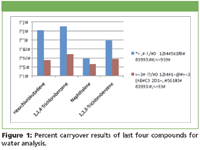
Figure 1
For this study, data pertaining to four of the higher molecular weight compounds and their respective matrices are summarized in Figures 1 and 2. These four compounds are typically the last compounds to elute from the GC and generally represent the worst case scenario for carryover. The chromatogram in Figure 3 illustrates the effectiveness of the methanol rinse of the glassware in limiting the carryover of the last four compounds. Overall, the Atomx displayed a remarkable capability of limiting carryover by utilizing Teledyne Tekmar's methanol rinse (patent pending) for the sparge vessel. In some instances, the methanol rinse resulted in a 50% decrease in carryover. It should be noted that one methanol rinse at 3 mLs received the same benefit as the 5 mL rinse, thus reducing overall methanol usage.
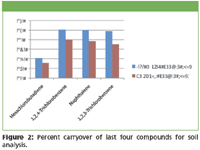
Figure 2
Conclusions
The new Atomx offers the best of both worlds, combining the autosampler and the PTC into one system resulting in a shorter sample pathway and improved temperature uniformity. The system uses Siltek™ coated stainless steel and PEEK® tubing to aid in the reduction of carryover. Finally, the system offers several rinse options for carryover reduction. Rinsing options include the ability to rinse the multi-stage needle and/or the sparge vessel resulting in a thorough rinsing of the entire liquid sample path. The system is capable of rinsing the sample path with 90 °C water, methanol, or both up to three times using varying volumes of either methanol or hot water. The methanol rinse (patent pending) featured with the Atomx system reduces carryover to less than 0.25% after a 200 ppb water sample, this reduction in carryover is comparable to a stand-alone concentrator. The new methanol rinse option and its effectiveness in reducing carryover will increase productivity in any lab as it will aid in system clean up after high level samples.
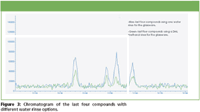
Figure 3
References
(1) USEPA Method 8260B, Volatile Organic Compounds by Gas Chromatography–Mass Spectrometry (GC–MS), Revision 2, December 1996.

Teledyne Tekmar
4736 Socialville Foster Road, Mason, OH 45040
tel. (800)874-2004; fax (513)229-7050
Website: www.teledynetekmar.com
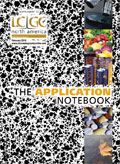
Separation of Ultra-Short and Long Chain PFAS Compounds Using a Positive Charge Surface Column
December 11th 2024A separation of ultra-short and long chain PFAS (C1-C18) is performed on a HALO®PCS Phenyl-Hexyl column along with a HALO®PFAS Delay column which demonstrates excellent retention for both hydrophilic and hydrophobic analytes.















